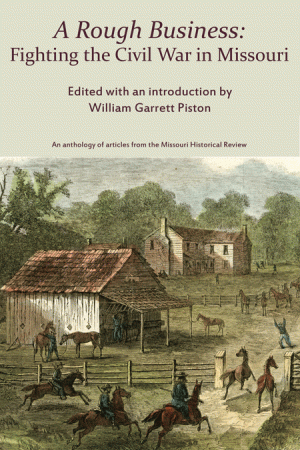On the border between the Union and the Confederacy, and divided by the allegiances of its residents to the cultures of the North and the South, Missouri could not avoid conflict during the American Civil War. The articles chosen by William Garrett Piston for this anthology show that no region of the state, no racial or ethnic group, and neither gender escaped the trials of the war. With a deliberate emphasis on military history, Piston argues for “its centrality to understanding the most significant conflict in our nation’s history.”
The fourteen articles, originally published in the Missouri Historical Review, in this anthology trace the conflict from the January 1861 inauguration of Governor Claiborne Fox Jackson and his secessionist efforts through the early battles of the war to the effects of guerrilla warfare on the civilian population, both those with Unionist and secessionist leanings, to the aftermath of the war when freed people moved from rural environs to towns and forced a new relationship between the races. Along the way, the authors describe the impact of military rule in the urban areas of St. Louis and Kansas City as well as in rural regions such as Saline and Platte counties and recount Union military movements through the Ozarks and a failed Confederate raid on Cape Girardeau.
About the Editor
William Garrett Piston is professor of history at Missouri State University, Springfield. He received his Ph.D. in 1982 from the University of South Carolina. He is the author of Lee’s Tarnished Lieutenant: James Longstreet and His Place in Southern History. He has coauthored Portraits of Conflict: A Photographic History of Missouri in the Civil War (with Thomas P. Sweeney); Wilson’s Creek, Pea Ridge, and Prairie Grove: A Battlefield Guide with a Section on Wire Road (with Earl J. Hess, Richard W. Hatcher III, and William L. Shea); and Wilson’s Creek: The Second Battle of the Civil War and the Men Who Fought It (with Richard W. Hatcher III).
Product Specifications
Published by the State Historical Society of Missouri, 2012. 308 pages. 90 illustrations.

